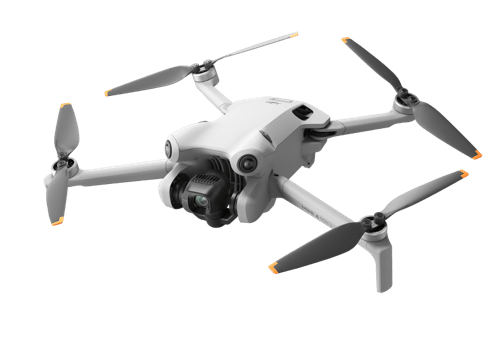sUAS Tower Inspection
An sUAS has a standard maximum altitude limit, but this can change when flying near towers.
The sUAS cannot fly higher than 400 feet above ground level (AGL).
HOWEVER, for tower inspections, the FAA allows you to fly up to 400 ft above the top of a tower while maintaining a 400 ft horizontal radius from it as well.
For example, if you’re inspecting a 200-foot tall cell tower, your sUAS can operate up to 400 feet above the tower’s peak (600 ft AGL) and within a 400-foot horizontal radius around it, ensuring safe and effective inspection while maintaining regulatory compliance.
Tower Heights on Sectional Charts
Study the chart below. These are the symbols used on sectional charts to represent hazards and obstacles.
Play close attention to the tower types. Sometimes towers are very close together and the Part 107 exam may ask you to inspect a Group of towers or Lighted towers, and you may need to be able to stop the difference.
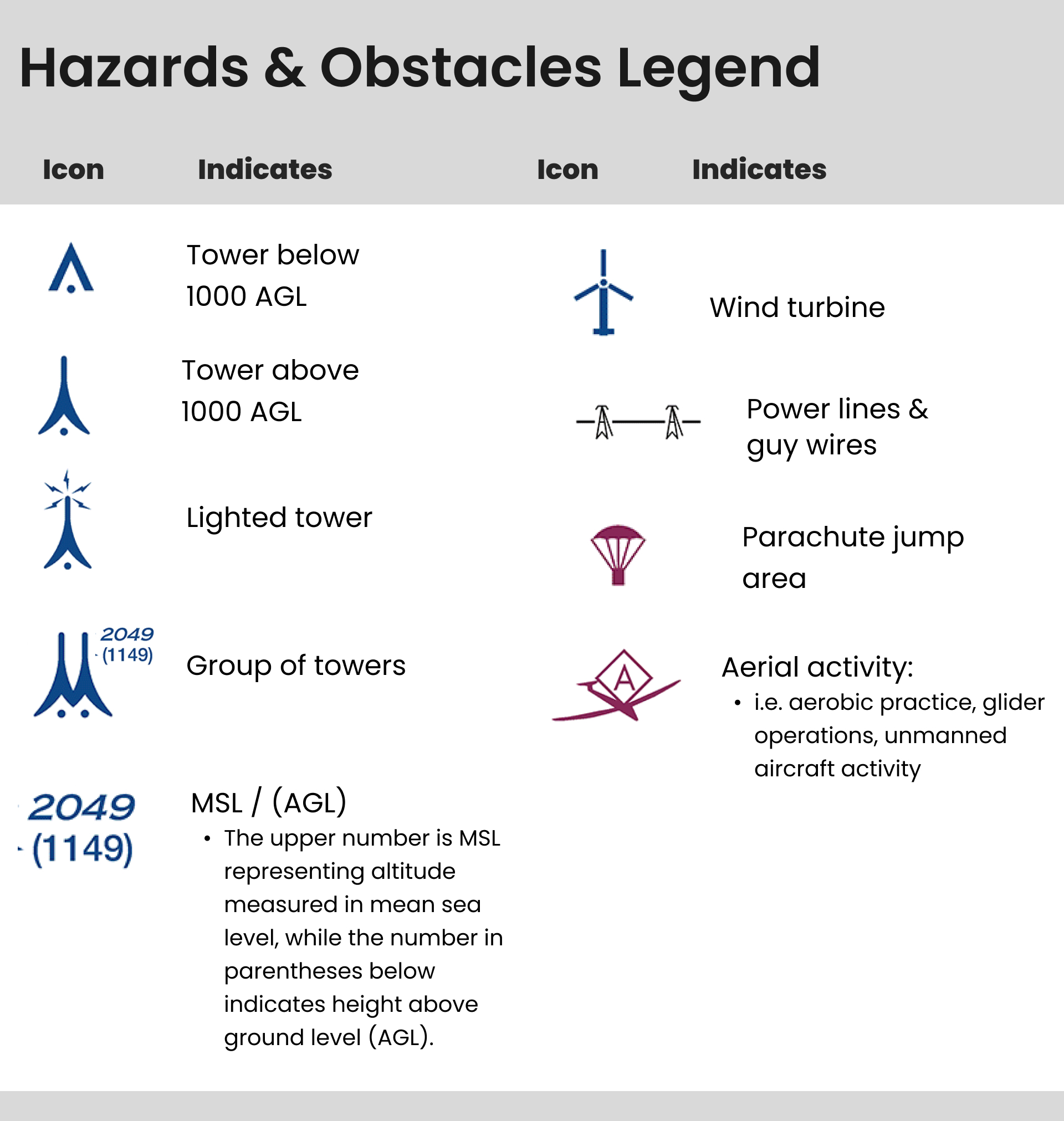
On Sectional Charts
Group of Towers:
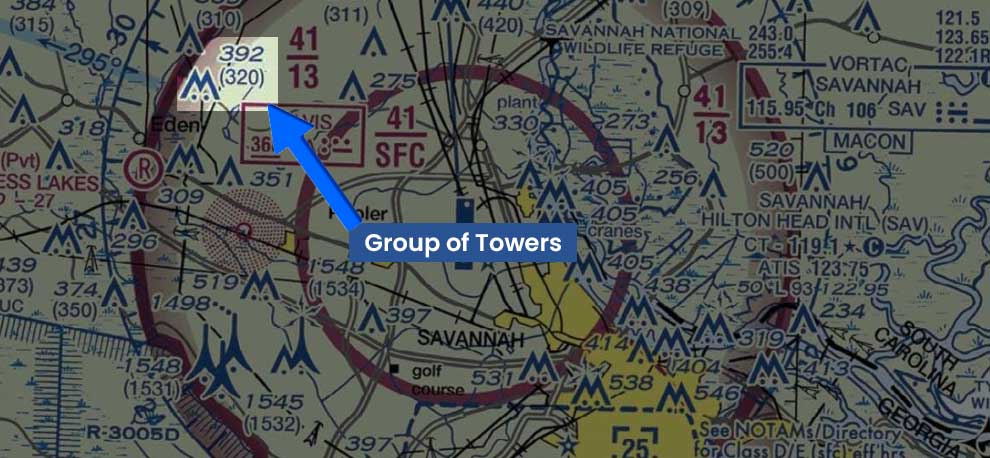
Lighted Tower:
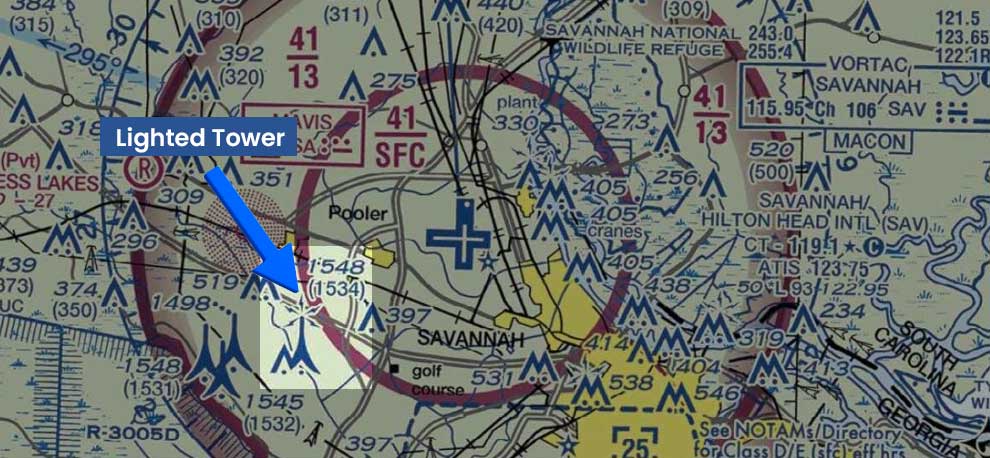
Tower Inspection Calculations
Tower AGL Height + 400 ft Clearance = Max Altitude sUAS flight
Example 1
To figure out how high you can fly near a tower, you’ll look at the height numbers on the sectional chart displayed next to each tower. You’ll add 400 feet to the given AGL height of the tower and have your answer.
Here’s a step-by-step break down.
- Step 1: Locate the Specific Tower:
- You’ll often be asked to first find a specific tower on the sectional chart located at a given distance from an airport. For example, “What is the height of the lighted tower 10 Nautical Miles southwest of Savannah International Airport?”
- What you’ll do is once you find the given airport on the sectional chart using its legend displaying the distance for nautical miles or square miles, you’ll then count those miles in the given direction (i.e. southwest) and find the tower.
- Step 2: Determine the MSL and (AGL) height of the tower
- The top number is always Mean Sea Level (MSL), and the bottom number in parenthases is always Above Ground Level (AGL).
- In the figure below we know the tower is at 387ft MSL, and 310 ft AGL.
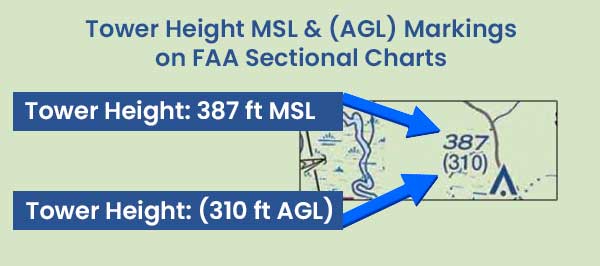
- Step 3: Add the 400ft Inspection Clearance
-
The maximum altitude you can fly above the tower for inspection within FAA regulations will be: 310 ft AGL + 400 ft = 650 ft AGL max altitude sUAS flight.
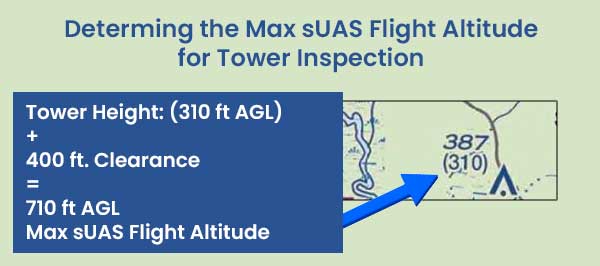
Simple Examples
Example 1
- First, find AGL in Parenthases: i.e. (250 ft AGL)
- Next, add 400 ft: i.e. (250 ft AGL + 400 ft)
- Remeber, according to Part 107, you’re allowed to fly up to 400 feet above the tower’s AGL height, as long as you remain within 400 feet horizontally of the tower.
- Your answer is 250 ft AGL + 400 ft = 650 ft max altitude sUAS flight
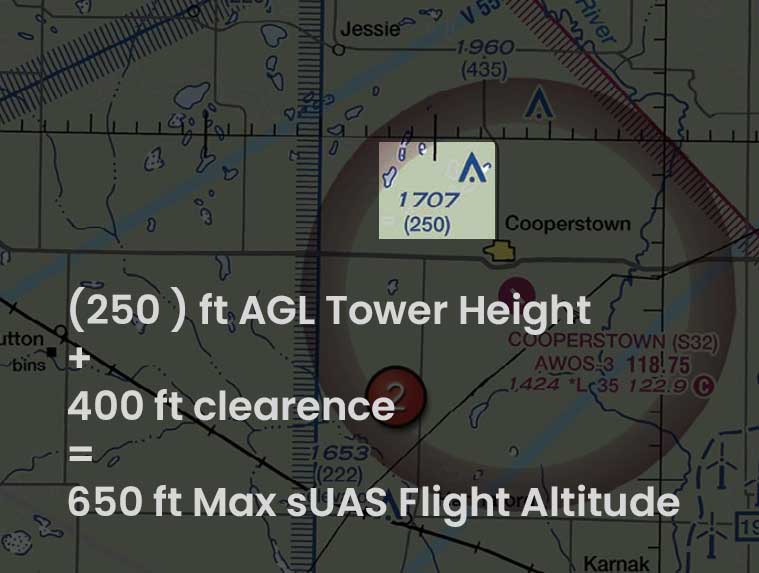
Example 2
Suppose you find a tower labeled as 1,969 (435). Here, 1,969 ft is the tower’s MSL height, and (435) is its AGL height
Since you’re allowed to fly up to 400 ft above the tower’s AGL height, you would add 400 ft to the 435 ft AGL height of the tower.
- 435 ft AGL (tower height) + 400 ft = 835 ft AGL maximum altitude the sUAS can fly.
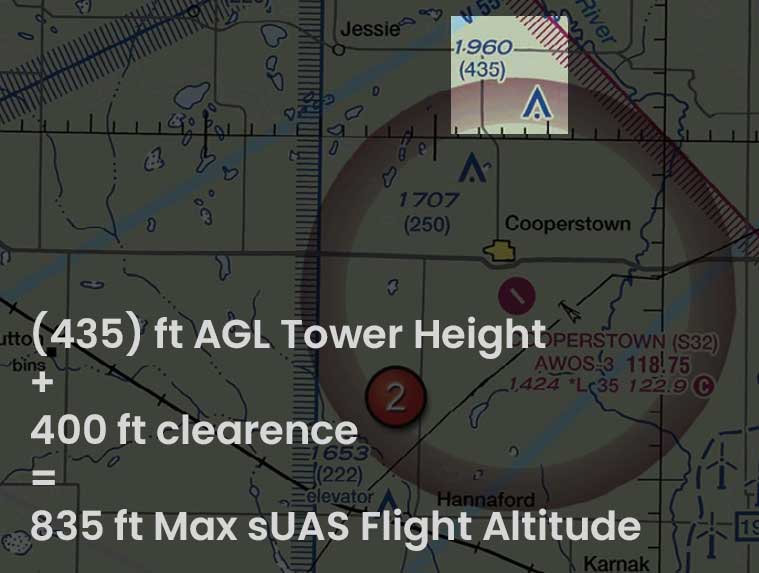
Example 3
For the following 3 examples, what is the highest you’re allowed to fly to inspect these towers under Part 107 (as long as you operate within 400 ft. of the tower at all times)?

Advanced Examples
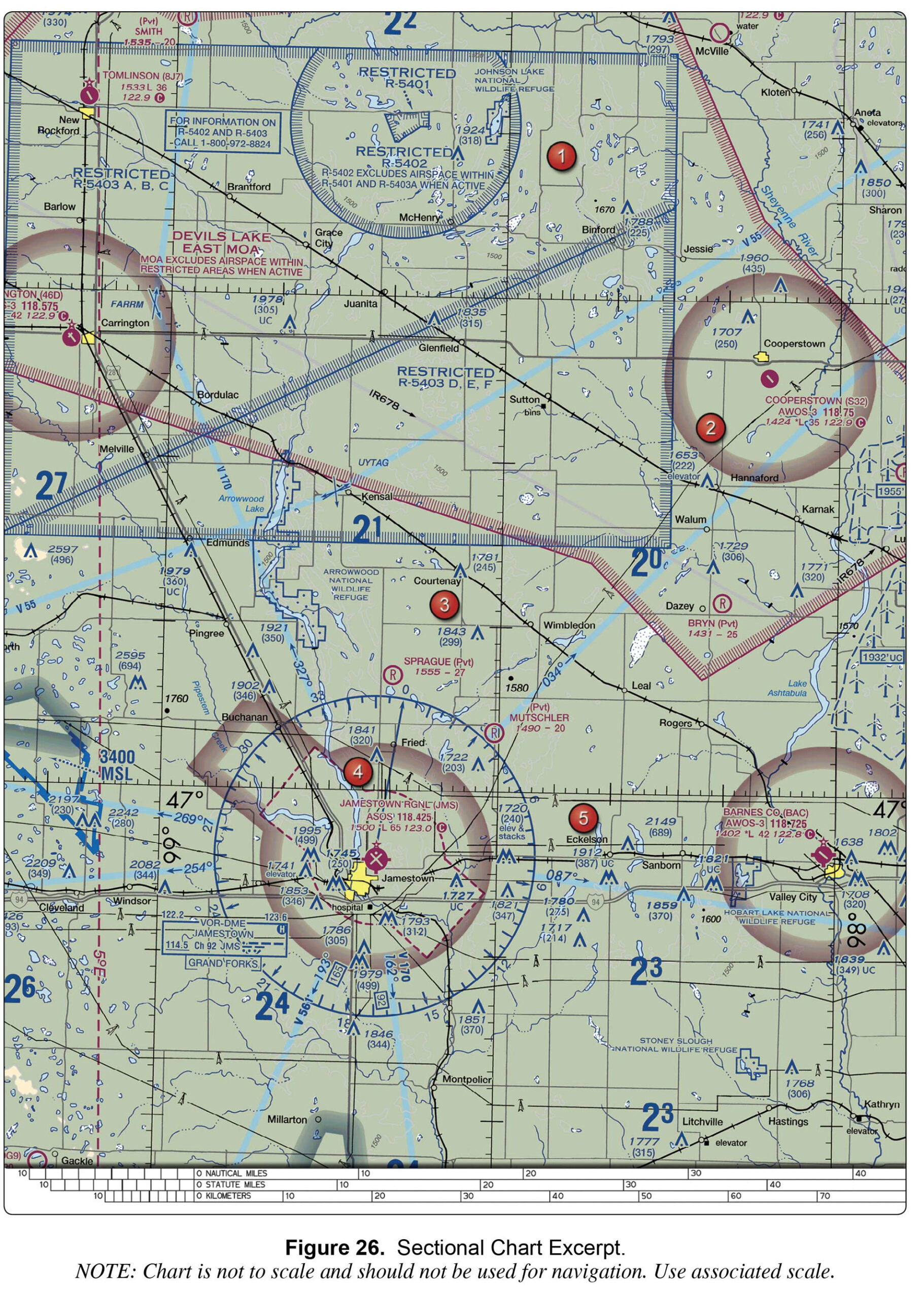
Example 1
- What is the tower’s height in AGL?
- (499) ft AGL
- What airspace class is the tower sitting in?
- Class E starting at surface, indicated by magenta dashed lines.
- What is the maximum altitude you can fly your sUAS from the top of the tower?
- Equation: 499 ft + 400 ft = 999 ft maximum sUAS flight altitude
- Given the airspace, do you need ATC clearance in order to inspect the tower within the maximum altitude clearance?
- Class E airspace does not require ATC clearance.
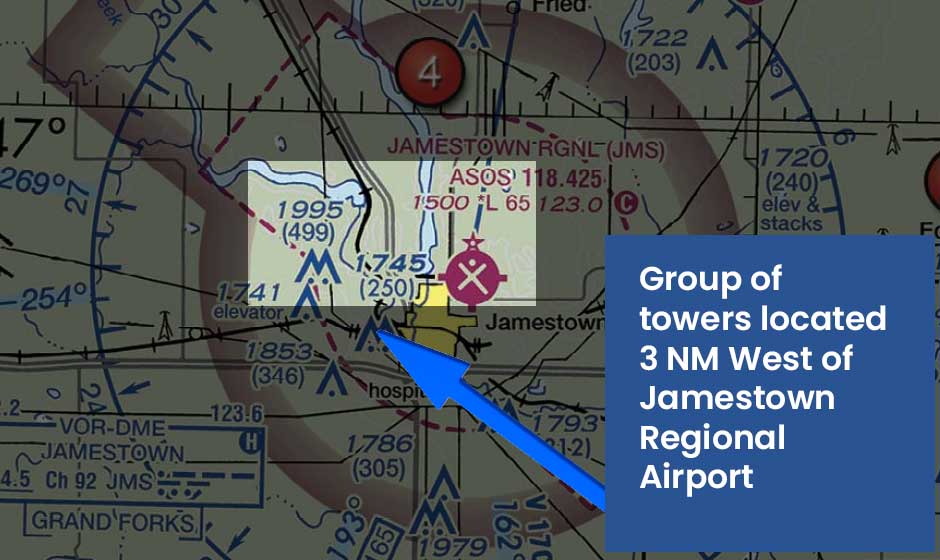
Example 2
- What is the tower’s height in AGL?
- (250) ft AGL
- What is the maximum altitude you can fly your sUAS from the top of the tower?
- Equation: 250 ft + 400 ft = 650 ft maximum sUAS flight altitude
- If you want to inspect the tower up to 650 ft AGL with your sUAS what airspace will you be flying within?
- Class G Airspace.
- This one is almost tricky. Remember, shaded magenta indicates Class E Airspace starting at 700 ft AGL. Given you do not fly your sUAS overt he flight altitude limit of 650 ft, you’ll never reach Class E airspace, and the entire operation will take place in the Class G airspace below it.


